1. 1. Competition
1.1. Sustainable competitive advantage through innovation
1.2. Competition between online and offline organizations
1.3. Level of advertising expense
1.4. Powerful competitive strategy which could potentially be realized by adhering to Porter‘s work on low cost versus differentiation.
1.5. Firm concentration ratio
1.6. Explanation
1.6.1. The first of the five forces refers to the number of competitors and their ability to undercut a company. The larger the number of competitors, along with the number of equivalent products and services they offer, the lesser the power of a company. Suppliers and buyers seek out a company's competition if they are able to offer a better deal or lower prices. Conversely, when competitive rivalry is low, a company has greater power to charge higher prices and set the terms of deals to achieve higher sales and profits.
2. 2. Potential of new entrants
2.1. Supply-side economies of scale
2.2. Demand-side benefits of scale
2.3. Customer switching costs. These are well illustrated by structural market characteristics such as supply chain integration but also can be created by firms. Airline frequent flyer programs are an example.
2.4. Capital requirements – clearly the Internet has influenced this factor dramatically. Web sites and apps can be launched cheaply and easily as opposed to the brick and mortar industries of the past.
2.5. Incumbency advantages independent of size (e.g. customer loyalty and brand equity)
2.6. Access to distribution channels
2.7. Government policy such as sanctioned monopolies, legal franchise requirements, patents, and regulatory requirements.
2.8. Explanation
2.8.1. A company's power is also affected by the force of new entrants into its market. The less time and money it costs for a competitor to enter a company's market and be an effective competitor, the more an established company's position could be significantly weakened. An industry with strong barriers to entry is ideal for existing companies within that industry since the company would be able to charge higher prices and negotiate better terms.
3. Michael Porter
3.1. wikipedia
3.2. Michael Porter
3.3. Videos
3.3.1. Michael Porter Explains His Famous Five Forces And How They Can Be Used In Business Strategy
3.3.2. The Explainer: The 5 Forces That Make Companies Successful
4. 3. Power of suppliers
4.1. Supplier switching costs relative to firm switching costs
4.2. Degree of differentiation of inputs
4.3. Impact of inputs on cost and differentiation
4.4. Presence of substitute inputs
4.5. Strength of distribution channel
4.6. Supplier concentration to firm concentration ratio
4.7. Employee solidarity (e.g. labor unions)
4.8. Supplier competition: the ability to forward vertically integrate and cut out the buyer.
4.9. Explanation
4.9.1. The next factor in the five forces model addresses how easily suppliers can drive up the cost of inputs. It is affected by the number of suppliers of key inputs of a good or service, how unique these inputs are, and how much it would cost a company to switch to another supplier. The fewer suppliers to an industry, the more a company would depend on a supplier. As a result, the supplier has more power and can drive up input costs and push for other advantages in trade. On the other hand, when there are many suppliers or low switching costs between rival suppliers, a company can keep its input costs lower and enhance its profits.
5. 4. Power of customers
5.1. Buyer concentration to firm concentration ratio
5.2. Degree of dependency upon existing channels of distribution
5.3. Bargaining leverage, particularly in industries with high fixed costs
5.4. Buyer switching costs
5.5. Buyer information availability
5.6. Availability of existing substitute products
5.7. Buyer price sensitivity
5.8. Differential advantage (uniqueness) of industry products
5.9. RFM (customer value) Analysis
5.9.1. Recency – How recently did the customer purchase?
5.9.2. Frequency – How often do they purchase?
5.9.3. Monetary Value – How much do they spend?
5.10. Explanation
5.10.1. The ability that customers have to drive prices lower or their level of power is one of the five forces. It is affected by how many buyers or customers a company has, how significant each customer is, and how much it would cost a company to find new customers or markets for its output. A smaller and more powerful client base means that each customer has more power to negotiate for lower prices and better deals. A company that has many, smaller, independent customers will have an easier time charging higher prices to increase profitability.
6. 5. Threat of substitutes
6.1. Buyer propensity to substitute. This aspect incorporated both tangible and intangible factors. Brand loyalty can be very important as in the Coke and Pepsi example above; however contractual and legal barriers are also effective.
6.2. Relative price performance of substitute
6.3. Buyer's switching costs. This factor is well illustrated by the mobility industry. Uber and its many competitors took advantage of the incumbent taxi industry's dependence on legal barriers to entry and when those fell away, it was trivial for customers to switch. There were no costs as every transaction was atomic, with no incentive for customers not to try another product.
6.4. Perceived level of product differentiation which is classic Michael Porter in the sense that there are only two basic mechanisms for competition – lowest price or differentiation. Developing multiple products for niche markets is one way to mitigate this factor.
6.5. Number of substitute products available in the market
6.6. Ease of substitution
6.7. Availability of close substitute
6.8. Explanation
6.8.1. The last of the five forces focuses on substitutes. Substitute goods or services that can be used in place of a company's products or services pose a threat. Companies that produce goods or services for which there are no close substitutes will have more power to increase prices and lock in favorable terms. When close substitutes are available, customers will have the option to forgo buying a company's product, and a company's power can be weakened.
